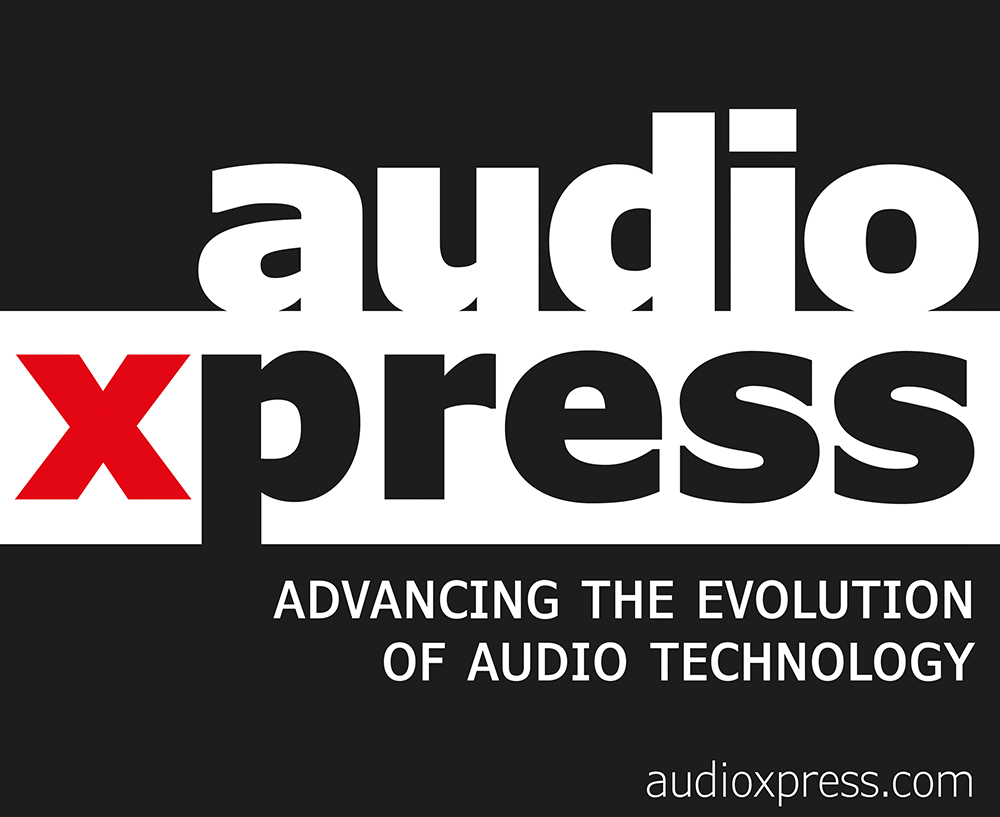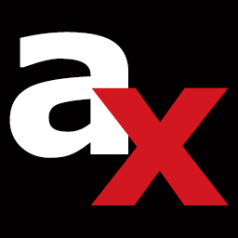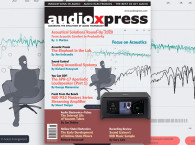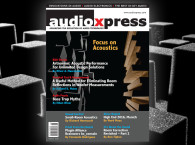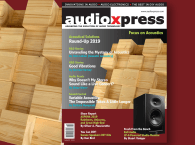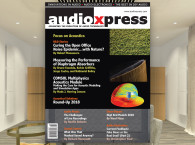 Acoustic science is where everything starts, determining how sound and audio systems behave in practice. Since we refreshed audioXpress’ contents in 2013, we have made acoustics an integral part of our mission, together with every other critical discipline in audio development and product design. Each month, audioXpress revisits some of the fundamentals of acoustical science and praxis in Richard Honeycutt's Sound Control column, but our August edition is a special issue focused on acoustics.
Acoustic science is where everything starts, determining how sound and audio systems behave in practice. Since we refreshed audioXpress’ contents in 2013, we have made acoustics an integral part of our mission, together with every other critical discipline in audio development and product design. Each month, audioXpress revisits some of the fundamentals of acoustical science and praxis in Richard Honeycutt's Sound Control column, but our August edition is a special issue focused on acoustics.Our Acoustic Focus special features start with an Acoustical Solutions product round-up, introducing several acoustic treatment companies and their first-approach acoustic solutions. In acoustics, the first rule is to seek expert assistance for an analysis of the room/space and the projected applications. Most of the companies featured in this round-up can support projects, providing expert advice and offer a variety of acoustical solutions for all types of projects and applications. Still, acoustic treatment companies are increasingly discovering that engaging with potential clients, whenever they recognize the need for an acoustic solution, is the key for further engagement that eventually leads to finding the exact solution required for each project. And nothing proves more effective to create that link than offering "first approach" packages with basic acoustic panels.
Highlighted on this month's cover is a review of JOCAVI’s highly specialized acoustic shells, which are able to dramatically improve sound diffusion during live performances. This is an application area where acoustic science interleaves with art and directly connects with sound engineering. JOCAVI’s AS Acoustic Shell range uses different materials and unique geometries to project sound from the stage toward the audience, while also enhancing the performers' awareness of stage sound.
We also feature some great articles about acoustic praxis, starting with “New Research on Low-Frequency Absorption Using Membranes,” by John Calder (Acoustic Geometry). The article describes the problem of destructive room modes in critical-listening and sound recording environments, and the difficulties associated with testing low-frequency absorbers, which are most often used to mitigate room modes.
Next up, Ethan Winer (RealTraps), explains what “early reflections” are and why they must be avoided if the goal is accurate sound reproduction. In “Sound Diffusion: The Movement Toward Omnipresence,” Jim DeGrandis (Acoustics First) discusses recent developments in diffusion, diffusor design and use, the science around diffusion simulation, and contributions for an upcoming standard.
In Sound Control, Richard Honeycutt discusses Acoustics and Microphone Placement. As he explains, “Irrespective of the microphone choice, you can only get a good recording if you consider certain acoustical principles for microphone placement - even if you do audio recording using a cell phone!”
This edition also includes our report about the Munich High End 2017 show. The 36th consecutive staging of the Munich High End show, held from May 18-21, 2017, at MOC, drew people from all over the world to explore products and trends in the audio industry. Ward Maas shares his personal experience and all the products and companies that captured his attention.
Indirectly related to the acoustics focus, Gary Galo reviews Primacoustic's Recoil Stabilizers, which tackle the problem of loudspeaker stability and isolation. From a completely different perspective, Fernando Rodrigues reviews the Celemony Melodyne 4 software, and its Direct Note Access (DNA) technology that analyzes the audio to determine the main frequency content and displays the result as notes that users are able to manipulate at will.
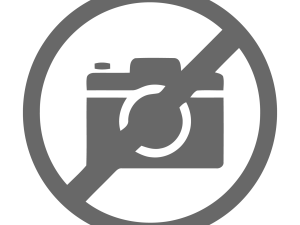 For those following Ron Tipton's adventures in Sound Reproduction, this edition concludes his Loudness Revisited article series, looking at ways to understand, measure, and use loudness control. In this article, he looks at the practical experience with some invaluable software tools.
For those following Ron Tipton's adventures in Sound Reproduction, this edition concludes his Loudness Revisited article series, looking at ways to understand, measure, and use loudness control. In this article, he looks at the practical experience with some invaluable software tools.And because we always need great audio electronics, in his Hollow-State Electronics column, Richard Honeycutt discusses David Theodore Nelson Williamson’s power amplifier designs, which incorporated negative feedback and explore Talbot M. Wright’s suggested improvements to decrease Intermodulation Distortion.
audioXpress August 2017 is now ready to access and download online. Just visit: www.gotomyxpress.com
Of course you can also subscribe here: www.audioxpress.com/page/audioXpress-Subscription-Services.html
And you can also buy a single printed issue or the complete audioXpress issue archive on USB at www.cc-webshop.com
